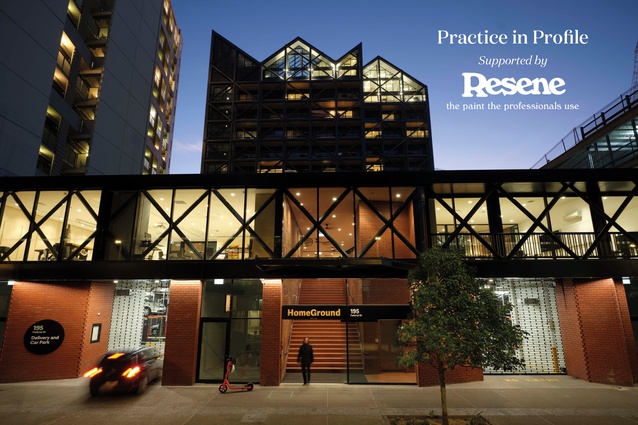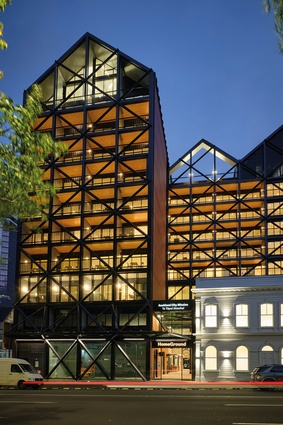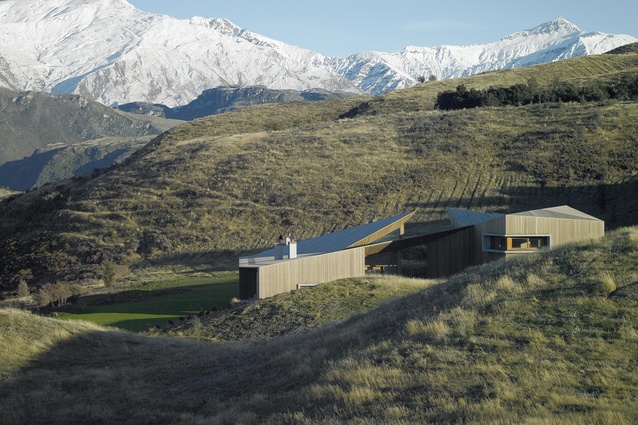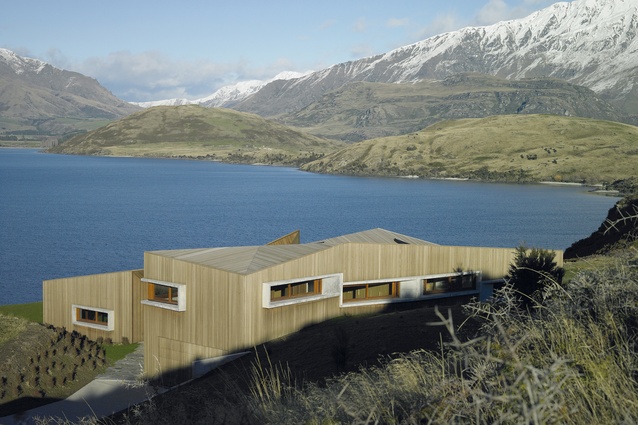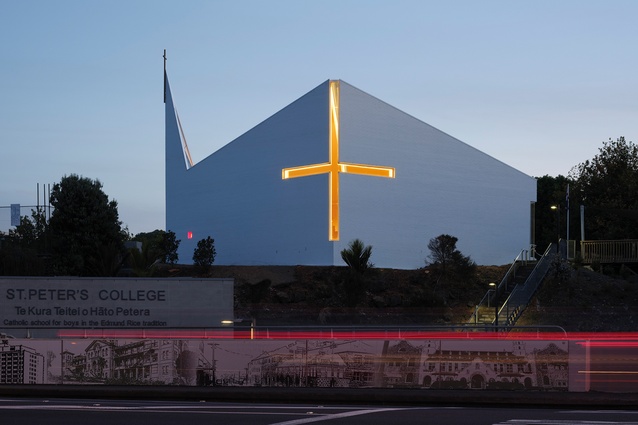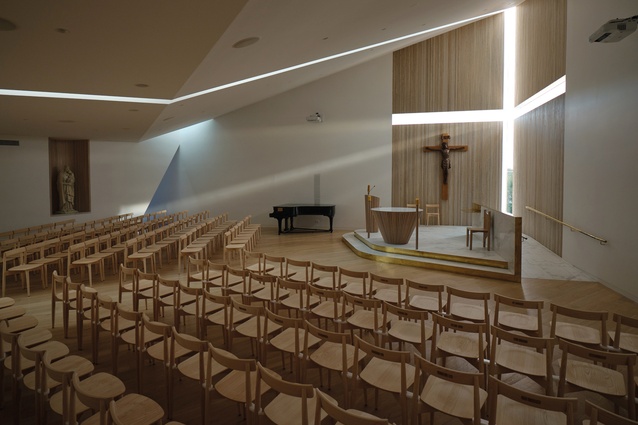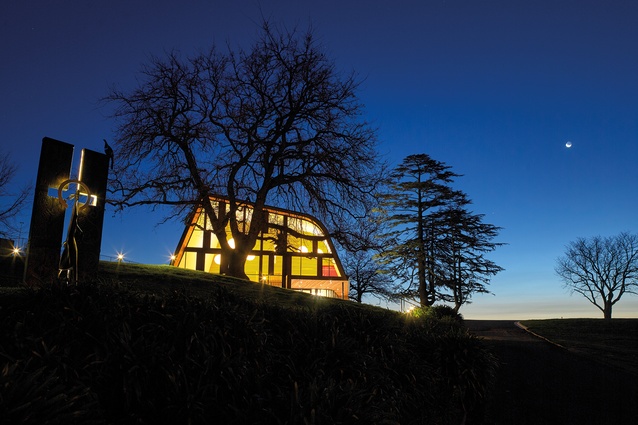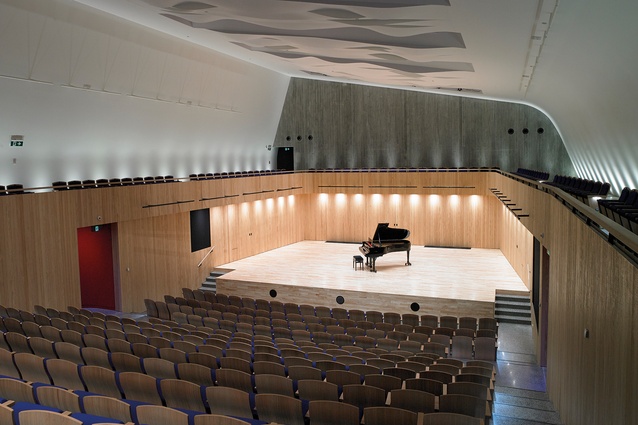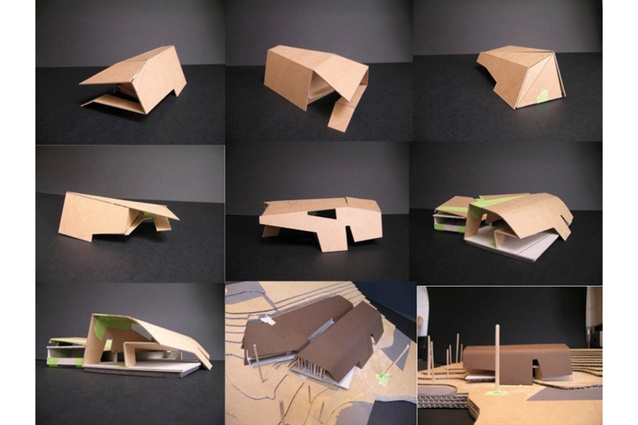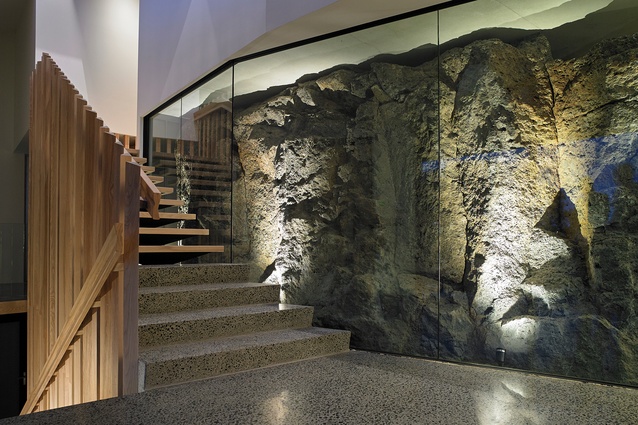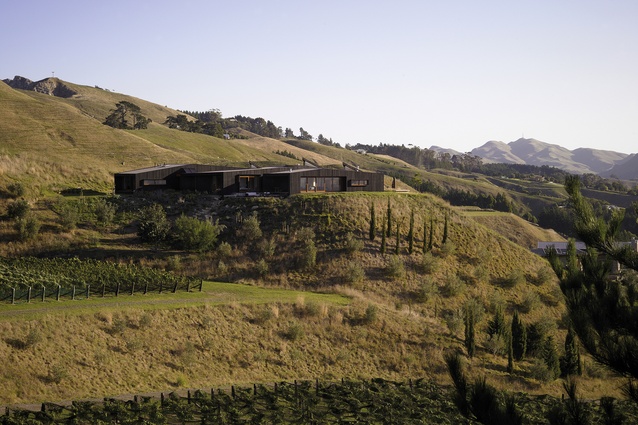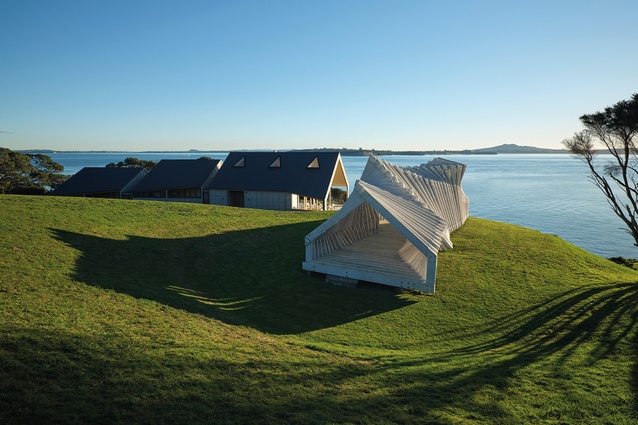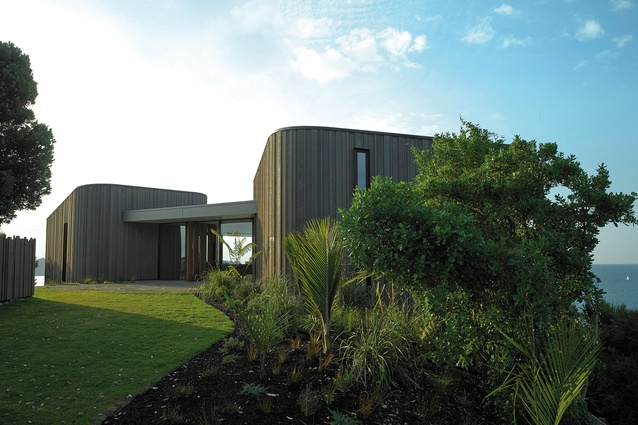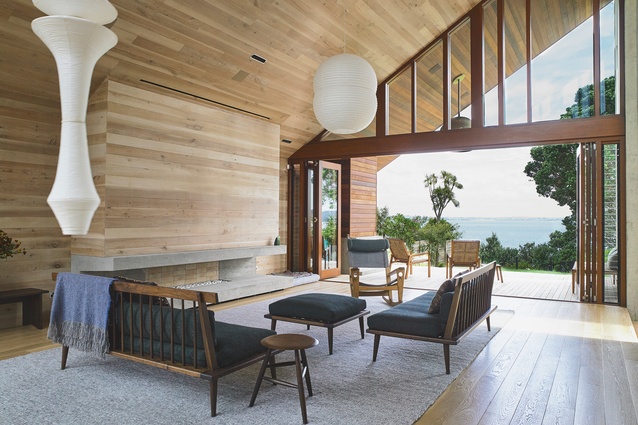Genius loci
Nicholas Stevens and Gary Lawson, awarded the 2022 Gold Medal by Te Kāhui Whaihanga New Zealand Institute of Architects, reflect on 20 years of their practice: the way architecture expresses identity and how individuals and communities identify with buildings.
Receiving the Gold Medal has prompted us to reflect on our body of work over the last 20 years and to distil the underlying themes and imperatives that connect the individual works. We believe that the overarching driver in our work has been a search for a spirit of place or ‘Genius Loci’, a term defined within the context of architecture by the theorist Christian Norberg-Schulz.
Norberg-Schulz elaborates: “Identity means, primarily, that one defines and develops one’s own local characteristics, while freedom means, among other things, equality of opportunity to play one’s part in a greater context.”
In the face of the unrelenting forces of globalisation, we are interested in creating an identifiable position for New Zealand architecture within a global context. More than this, we are searching for regional differences to inform and generate further distinctions. In other words, we are trying to build architecture that embodies a sense of place specific to New Zealand as a country but, also, to particular locations within New Zealand.
This is not a new idea. Kenneth Frampton’s concept of Critical Regionalism, as resistance to universal modernism, covered this ground in the 1970s but it feels as relevant now as it did then.
There is a groundswell of inventive architecture appearing around the world and New Zealand that is infused with a specific sense of place and local cultural history. It is important to emphasise the ‘critical’ in critical regionalism.
In the context of Aotearoa New Zealand, collaborations with tangata whenua have revealed
deeper understandings of place, further enriching our design process. Concepts built around the
spiritual connection between land and people, and being mindful of multiple histories, has led to multilayered design responses. We feel this has helped us to create architecture that can be understood through multiple readings that are highly specific to place. We have a particular interest in the way in which architecture expresses identity and how individuals and communities identify with buildings.
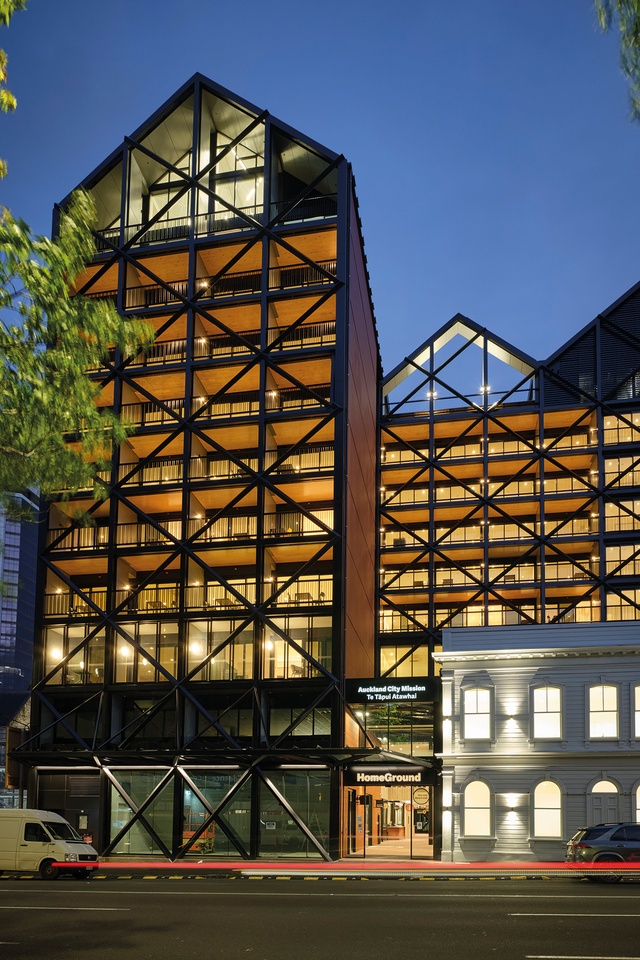
We see our HomeGround project for the Auckland City Mission embodying such concepts in multiple ways.
One of the most comprehensive of its kind in the world, HomeGround provides a wide-ranging and unique blend of services and facilities for people in desperate need, and operates across multiple social, cultural and ecological layers.
A project narrative developed with Ngāti Whātua Ōrākei is founded on the idea gifted to the project by the iwi of ‘Finding your way back home’. As approximately 80 per cent of Auckland City Mission’s clients are of Māori or Pasifika descent, it was imperative our design reflected and respected this connection, aiming to provide a strong sense of identity.
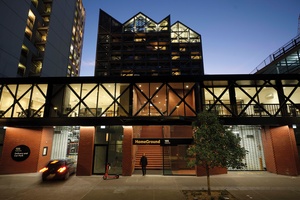
The building form is purposefully in reaction to ‘generic’ inner-city buildings, with the strong,
gabled roof forms evoking the idea of home: a home for the homeless. It is literally a big house in the city.
HomeGround is a direct neighbour to the 1905 St Matthew-in-the-City Anglican Church, which
has neo-Gothic gabled roof forms and was the Mission’s founding church organisation. We see the roof forms as a conversation between the two iconic institutions.
Our architecture embodies Māori and Pacific motifs relevant and important to the City Mission and Auckland’s identity as the largest Pacifica city in the world. HomeGround also seeks to establish a direct visual connection to Ngāti Whātua Ōrākei’s Wharenui Tumutumuwhenua through form and colour. The main façades of our design evoke readings of weaving, tukutuku and tapa, suggestive, perhaps, of the Mission’s work — of weaving community together and weaving individuals’ lives together.
We believe that, thanks to its collaborative cultural design expression, HomeGround represents a positive step towards honouring our role in respecting and building on the promise of Te Tiriti o Waitangi, through creating architecture that is socially just, culturally rich and ecologically restorative.
We have woven together many things to create HomeGround and, in doing so, have generated an expression of place that can be interpreted by different cultures in different ways.
This woven and layered approach to the references and narratives we combine purposely
allows our work multiple readings and interpretations. We see this approach to our work as trying to define a sense of local character while also playing our part in a greater context. The work attempts a progressive synthesis of looking back while looking forward.
We aim to create original work with multiple interpretations: architecture that is rich in associations and has relevance to our culture and our landscape. We are not purists but, rather, are interested in architecture of association and relation. We see our practice as a laboratory where we combine different influences and ideas, drawing from disparate sources, some within architecture, some outside. We look at nature, history, craft, cinema, painting, sculpture and carving, and are interested in creating combinations that have a strange beauty, believing that beauty needs constant reinventing to remain potent and alive.
We sometimes use nature metaphors but, hopefully, not in a simplistic way and are always looking to abstract such forms and patterns, to translate them, to architecturalise them, through origami — a language of folding — for instance.
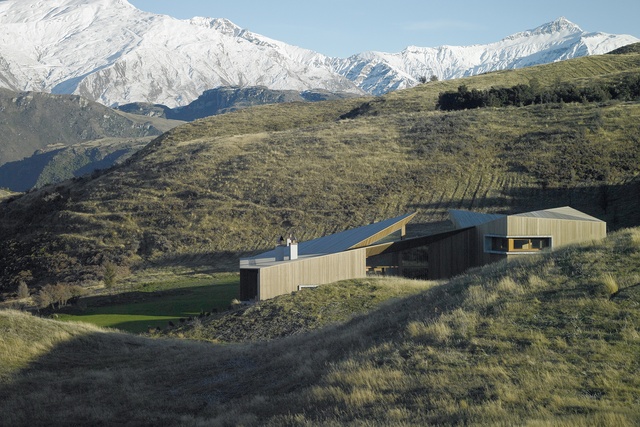
As our commissions extended throughout Aotearoa, we began to think more about why we
build this building in this place for these people. For us, a suburban house in Auckland should not look like or feel like a holiday house in the South Island. How could we express regional difference?
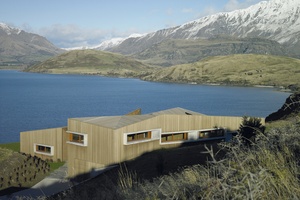
One example of such expression is Te Kaitaka, nestled amongst the tussock-covered hills on the
shores of Lake Wānaka. Our approach investigates an architectural language in conversation with the natural environment and local building traditions. Abstracted triangulated geometries and origami-like folds and cuts were employed to create a sculptural form relating strongly to the alpine landscape and further articulated through referencing the forms and textures of the
vernacular timber woolsheds of the area.
In Māori culture, the cloak, te kaitaka, is a potent symbol of shelter and nurture, expressed in the Wānaka building through a skin of natural cedar cloaking the raw concrete structure and, additionally, comparable to the tussock draped over the rocky landscape. The weathered, camouflage exterior gives way to a cave-like interior, providing a sense of protection from the power of the landscape and the extreme regional climate. We believe that, as a sculptural object within the landscape enfolding a rich interior experience, this house evokes a distinctive spirit of place.
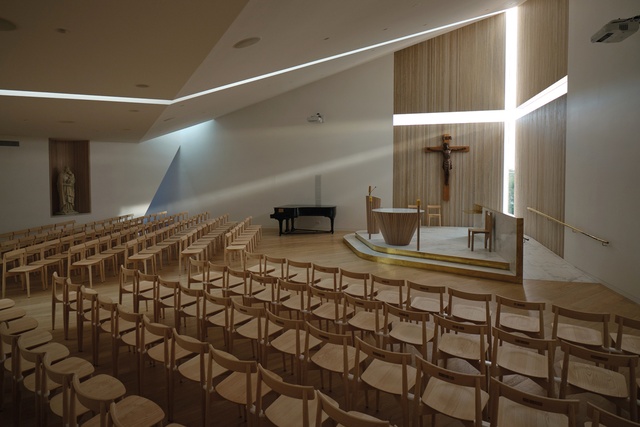
Paying attention to regional distinctions has offered us fertile ground for exploring difference,
drawing out subtleties and idiosyncrasies particular to a place, and experimenting with the way architecture might capture and express such distinction. The challenge is to create an architecture that somehow represents New Zealand’s unique qualities and identity while not rejecting what the world and contemporary theory have to offer. We came face to face with this challenge when designing the Chapel of St Peter.
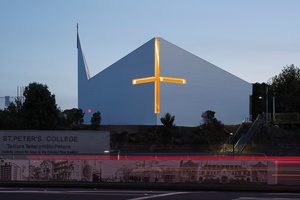
The design for the Chapel of St Peter presents a confident and identifiable cross to its most public face.
From outside the Chapel, the cross is expressed as a cut through the building’s exterior, revealing glimpses of the interior as an invitation to explore what lies within. Internally, the vertical element of the cross is extended into and along the roof to present itself as an inverted, upside-down cross, flooded with light. As Saint Peter was crucified upside-down at his
protest of being unworthy to die in the same manner as Christ did, this inversion of the cross
becomes apparent only from within the chapel and, as such, reveals an intimate connection
between Saint Peter and the assembly, giving the interior experience an elevated depth of meaning and theological reading.
In the 1960s and ’70s, Colin McCahon undertook a series of religious-based works
exploring themes of Christianity, the power and significance of the cross and other religious symbolism, and the meaning of ‘light’. A constant inspiration to our architecture, the paintings of McCahon offer insight into conceptual thinking and interpretations that enrich our design thinking. Knowledge and study of these paintings and their narratives have extended our understanding of the power of the cross, and the way light can offer a connection to the spiritual world.
For example, in 1977’s ‘Veronica – The Five Wounds of Christ’, an unusually proportioned cross
of light symbolises emptiness and the cross reads as a beacon of light within darkness. The internal cross of our design is rendered as an abstracted cross of light, which links to McCahon’s idea of light being the connector between physical and spiritual — light, and its symbolism, is used to represent the mystery of Christ and to make this mystery accessible to the human spirit.
During the initial stages of our design work, we research something relevant and local to respond to. The result is not necessarily contextual in a traditional sense, but we think deeply about how we relate to context and what the building might express about it. We want the architecture to resonate with association, to be at once unusual — sometimes even
startling — and, simultaneously to feel right. We are searching to create something new yet strangely familiar, and to stir the soul a little.
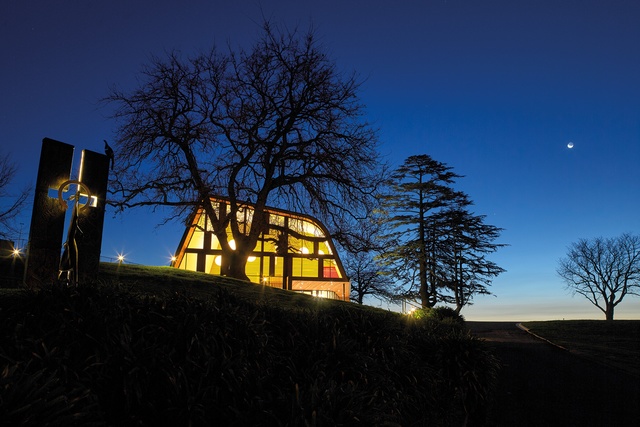
This blending of contextual ideas underpinned the design of The Blyth Performing Arts Centre at Iona College in Hawke’s Bay. The building has a sculptural language of sinuous curves and angled planes, which are drawn from the shapes of musical instruments and the folded landscape of the region. The roof is bent and shaped into a form that is taut yet graceful, and resonant with energy. We were interested in the building’s architecture having a strong relationship with the local landscape form of Te Mata Peak, part of a distinctive mountain range that rises to a sharp ridge line before dropping dramatically to the valley below. An abstraction of this iconic landform became the cross-section of the building and defines the dramatic double-height space of the entry foyer, emphasising the sense of occasion on arrival.
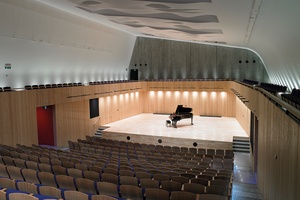
We conceived of the building as analogous to a violin within its case. Like a musical instrument,
the Concert Chamber is an elegant form with finely tuned acoustics. Tiered seating, a balcony, an undulating, asymmetrical, curved ceiling and angled walls give the space a sculptural quality, a theatrical atmosphere and a sense of spatial intrigue. The detailed, nuanced form of the hall has a distinct quality of its own that is loosely described by the outer form of the building, while the outer shape expresses its own purposes of protection and containment.
Through our belief that the best architecture is a perfect synthesis of form and function, not only
beautiful but beautiful to use, our design for The Blyth aimed to create an architectural expression of strength and grace, and, hopefully, an experience that approaches the sublime beauty of music.
Through describing our design language within these works, we have attempted to bring some clarity to our ethos and design approach. This has been a useful process of reflection within our partnership but, also, perhaps a rare moment to share the inner workings of 20 years of creative practice and what we hope lies within the physical presence of our architecture. In our work, we have endeavoured to distil an expression of a spirit of place relevant to who we are and to the place in which we live: Aotearoa, New Zealand.
Ultimately, we want our buildings to sit in the landscape, be it rural or urban, with grace.
ON MODELS
Within our design partnership, the role of the model as a communication tool is incredibly important. It externalises the design process, as the models literally sit between us, are shaped by us and form the very basis of our design method. It is, literally, hands-on work.
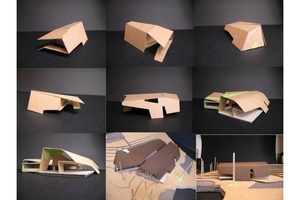
One of the important parts of our design process is that the models are made and re-made. In this way, it is a continuous action — a series of changes that take place in a conscious
manner until we are happy with the result. Each subsequent model becomes an example for imitation or comparison. It is very rare for only one model to be made for a project.
For us, models engage directly with the treatment of volume, and the generation of form, in a manner that is similar to the process of creating a sculpture. The light and shadow qualities of models help our understanding of forms, textures and materials.
We see our design process and ideas as layered, folded and twisted together, much like the construction of the models that represent them in the first place.
THE VISCERAL
Visceral qualities of architecture are very important to us — engaging with
not only visual form but also with sound, touch and smell. Regarding this, Alvar Aalto said: “Our senses convey to us the raw material on which our thinking is based”.
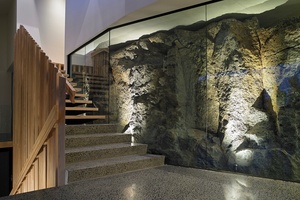
There is a cognitive power to architecture that directly engages the senses. This serves to elevate the experience of a particular building or space beyond merely the sensory to engage and stimulate the intellect, and often burns an indelible sense of such a building in the mind for years to come. The connection between the stimulation of the senses and the triggering of the intellectual experience of architecture is of great interest.
We love texture and shape, and focus our attention on details that building occupants will engage with — handrails and door handles, for example, receive particular priority. Tactile qualities are a definite focus, with things that are touched having a high sensual quality. They add to the most important aspects of our buildings: they are beautiful to use; things are in the right place, and are of the correct size and shape; and they feel good to be in.
Nicholas Stevens and Gary Lawson are the founding members of Stevens Lawson Architects, based in Parnell, Auckland. Over the last 20 years, the practice has won more than 30 national and international awards across a wide range of project types and scales.
You can watch their 2022 Gold Medal video here.

